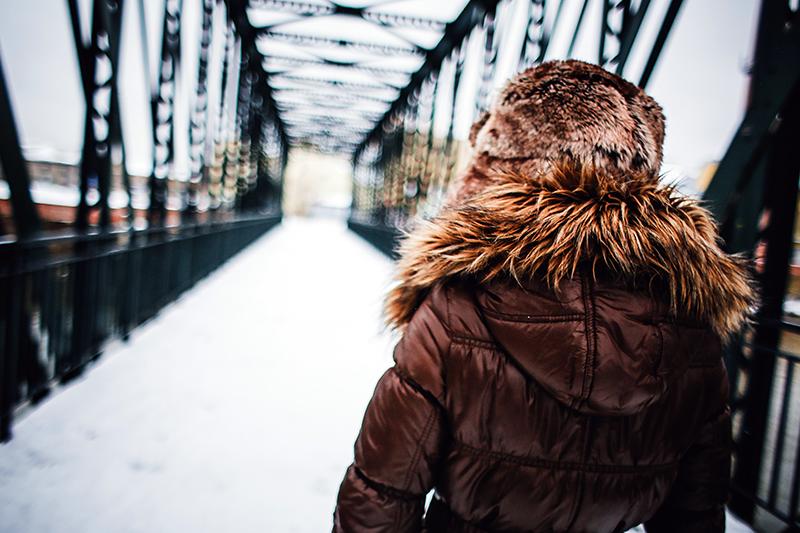The science behind winter clothing
Cleveland winters can be brutal, but not if you bundle up strategically. Here are some proven tips to keep you warm on your way to class.
The basics
The essential rule to stay warm is to stay dry. As moisture evaporates, it leaves you feeling colder (the reason why you still feel cold getting out of the pool on a 90-degree summer day). Pick moisture-wicking fabrics and layer your clothing to ensure you don’t sweat and get chilly on your power walk to class.
Layer properly
There are three major components to winter layers: base, middle and outer layers. Base layers are the lightweight clothes, such as a shirt, leggings and socks, that directly touch the skin. These items should be designed to wick moisture away from the body. Middle layers are your insulation: think fleece, sweaters and down jackets. Outer layers are the shell to keep wind and moisture off your middle layers, essentially a rain jacket. A good down coat will often have enough protection to suffice, but don’t neglect this shell on a particularly windy or snowy day. Be sure all layers fit snugly against your body to trap heat right where you want it.
Pick the right fabrics
Wool and polyester are two materials to look for in your base layers. Both fabrics are excellent for resisting moisture. Merino wool blends, for example, are thin and comfortable on the skin as a base layer. You can find polyester in most synthetic garments designed for outdoor gear.
Cotton is fantastic when exercising in the summertime, but avoid it in the winter. Cotton is highly absorbent and does not dry quickly, which is a no-no for optimal warmth, especially for a base layer.
Reconsider your gloves
If you can’t feel your fingers by the time you get to class each day, take a look at your gloves. Texting gloves tend to have less fabric on thumbs and index fingers, leaving your fingers colder than traditional gloves. If traditional gloves still aren’t enough, trade them in for mittens, as bundling your fingers together provides more insulating body heat.
Ignore old wives’ tales
Surely you have heard the claim that you lose the majority of your body heat through your head, but this is simply not true. Heat lost depends on the amount of exposed surface area, not the type of skin. Those blessed with full heads of hair can wear ear muffs or head wraps without sacrificing warmth or getting dreaded hat hair.


